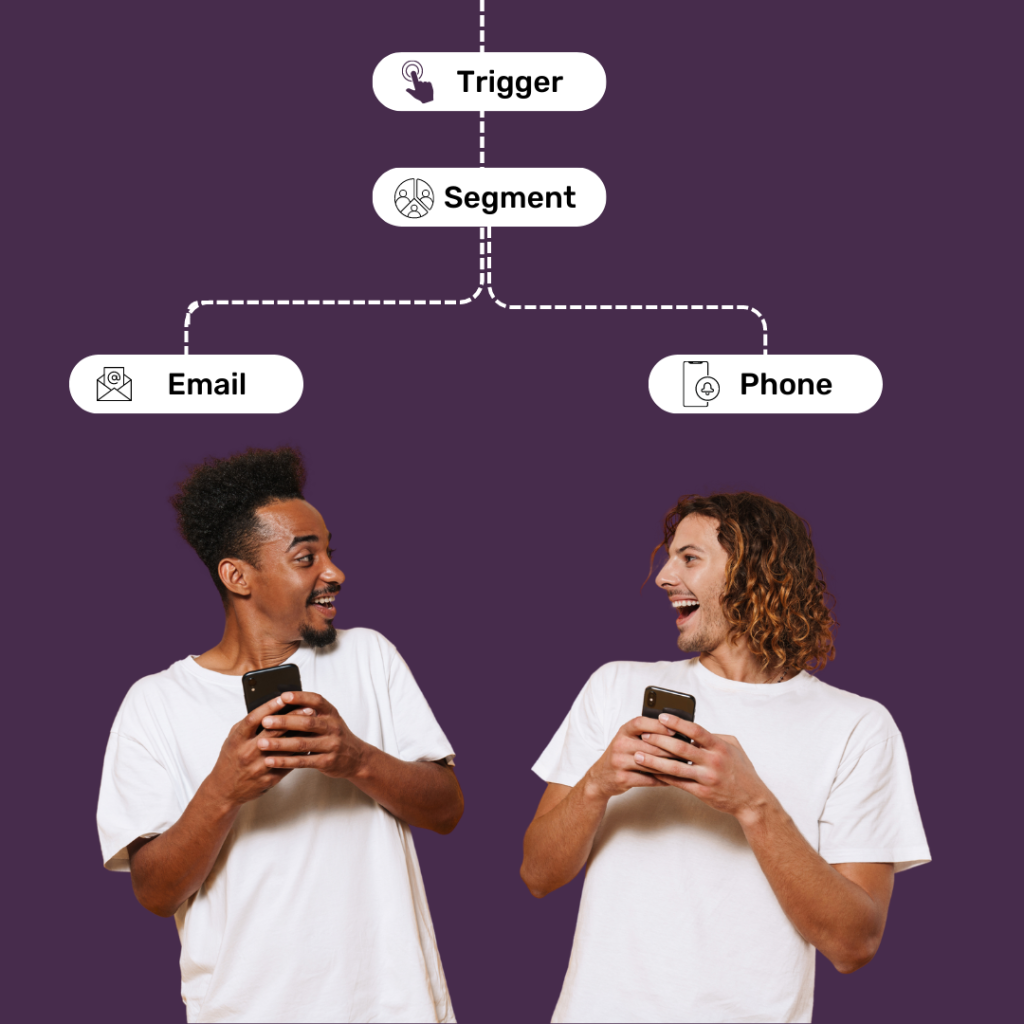
Welcome to the world of marketing automation, where cutting-edge technology meets customer-centric strategies to elevate your business to new heights. Picture this: increased efficiency, personalized customer experiences, and a boost in lead generation. That’s the power of marketing automation!
In today’s fast-paced and highly competitive market, staying ahead of the curve is essential for success, and marketing automation is the driving force behind many thriving businesses. In this blog post, we will discuss the benefits of implementing a marketing automation strategy and explore how it can enhance your business growth. Whether you’re a B2B company looking to convert qualified leads or an e-commerce business looking to build customer loyalty, marketing automation is a powerful solution that offers boundless potential for increasing your success.
Understanding Marketing Automation
The primary objectives of marketing automation are to streamline marketing processes, enhance customer experiences, and drive business growth.
The various components of marketing automation include:
- Campaign automation, where personalized and targeted messages are sent via mail or push notification automation to streamline marketing activities and to engage customers.
- Lead nurturing, involves guiding potential customers through the sales funnel with relevant content.
- Upselling and cross-selling by identifying opportunities to offer additional products or services to existing customers. Businesses can create automated workflows that deliver personalized recommendations and promotions by analyzing customer data and behavior.
- Customer segmentation allows marketers to group audiences based on specific characteristics for tailored campaigns.
- Automated loyalty programs can reward customers for their repeat purchases and engagement, encouraging them to stay loyal to the brand. Additionally, automated retention campaigns can be designed to re-engage inactive customers and gather feedback.
- A/B testing is a powerful tool in marketing automation that allows marketers to compare different elements of their campaigns to identify what works best. By testing variations of headlines, offers, copy, or images, businesses can gather valuable data on customer preferences and optimize their marketing efforts for better results.
- Workflow automation ensures seamless execution of marketing activities. By automating these tasks, marketers can save time and resources, enabling them to focus on high-impact activities like crafting creative strategies and building lasting relationships with customers.
Building an Effective Marketing Automation Strategy

Creating a successful marketing automation strategy involves several essential steps. Firstly, understanding your target audience and creating detailed buyer personas is important as it enables personalization and relevant content delivery. Craft a well-defined customer journey that takes potential leads from awareness to conversion, tailoring interactions based on data insights.
For example, an e-commerce platform can leverage the power of push notifications by sending personalized messages to customers with an abandoned cart. On the other hand, a B2B company can utilize lead scoring to estimate the likelihood of conversion based on interactions, triggering automated lead nurturing workflows with tailored messages to target high-potential customers.
Secondly, auditing your existing marketing activities will help you identify which tasks can be automated for increased efficiency. Identifying automation trigger points and exploring the capabilities of your marketing automation platform will ensure your automation tactics align with your tool’s capabilities.

Thirdly, setting clear and measurable goals is essential to gauge the success of your marketing automation efforts. Identify what you want to achieve, whether it’s generating more leads, nurturing existing ones, boosting conversions, improving customer retention, or other objectives. Next, choose relevant metrics to measure your progress, such as open rate, click-through rate, conversion rate, and customer lifetime value. Additionally, set realistic benchmarks to compare your performance and establish attainable goals. Marketing automation should align with your overall marketing strategy to achieve the best results. With SMART objectives in mind, you’ll pave the way for greater success in lead generation, nurturing, retention, and increased ROI.
Lastly, designing a plan for reporting and analysis helps you optimize your marketing automation efforts. Tracking performance metrics and campaign results helps identify areas for improvement and enables data-driven decision-making. Businesses can refine their automation strategies to bring higher conversion rates and generate more profit.
Choosing the Right Marketing Automation Platform

When selecting a marketing automation platform, several key factors come into play to find the right fit for your business.
First of all, understanding your budget and business needs is crucial to find a platform that aligns with your objectives. It’s essential to evaluate the software’s ease of use and the availability of customer support and training options. Consider the software’s ability to integrate with your existing tech stack and the range of channels it supports, including email, push notification, chat, and more. Additionally, assess the platform’s scalability to accommodate your future growth and its analytics and reporting options for measuring campaign success. By carefully considering these factors and comparing popular marketing automation tools and their features, you’ll make an informed decision that empowers your marketing efforts.
HubSpot, Klaviyo, and MailChimp are some of the most popular marketing automation platforms extensively used by businesses of various sizes.
HubSpot
HubSpot, founded in 2006, offers a comprehensive suite of tools tailored to enhance marketing, sales, and customer support activities within a single unified platform. Particularly well-suited for small to mid-sized enterprises, HubSpot’s intuitive design caters to businesses looking to simplify their digital marketing efforts and establish a cohesive online presence. While HubSpot offers numerous benefits, such as an easy-to-use interface, access to educational resources, and an ecosystem of interconnected hubs for marketing, sales, and operations, potential users should also consider factors like pricing tiers, customization challenges, and the need for technical support.
Klaviyo
Klaviyo, launched in 2012, caters to the needs of a wide spectrum of growing e-commerce businesses, encompassing solopreneurs, small businesses, and large enterprises alike. Like HubSpot, Klaviyo offers a comprehensive suite of features, including email marketing, SMS marketing, mobile app push notifications, micro-targeted campaigns, and omnichannel automations based on customer behavior. With a deep e-commerce focus, Klaviyo offers built-in functionality, revenue reporting, and customizable templates for automations, along with advanced segmentation. However, Klaviyo is not suitable for businesses that rely on traditional batch-and-blast email strategies or need advanced B2B use cases, such as lead scoring.
MailChimp
MailChimp occupies 42% of the market share in the online marketing industry and is particularly popular in Canada. Founded in 2001, MailChimp offers a user-friendly interface and a range of tools to assist users in designing engaging emails, managing subscriber lists, and automating marketing campaigns. In addition to email marketing, MailChimp provides tools for social media management, landing page creation, and even website building, making it an all-in-one marketing solution. One potential drawback of MailChimp is that its pricing plans can become expensive as subscriber lists grow, potentially posing a challenge for businesses with larger audiences. Additionally, while MailChimp offers automation features, they may be comparatively less advanced and intuitive when compared to some of its competitors in the email marketing space.
Conclusion
Building a successful marketing automation strategy involves defining clear goals, understanding the target audience, crafting personalized content for different stages of the customer journey, and utilizing analytics to optimize efforts continually. Embracing marketing automation empowers businesses to engage customers effectively and streamline marketing processes.
Ready to embark on your marketing automation journey? Ursa Marketing is here to assist you every step of the way. Our team of experts is well-versed in crafting personalized automation strategies that align with your business goals and objectives. Reach out to us today to explore how marketing automation can transform your marketing initiatives.